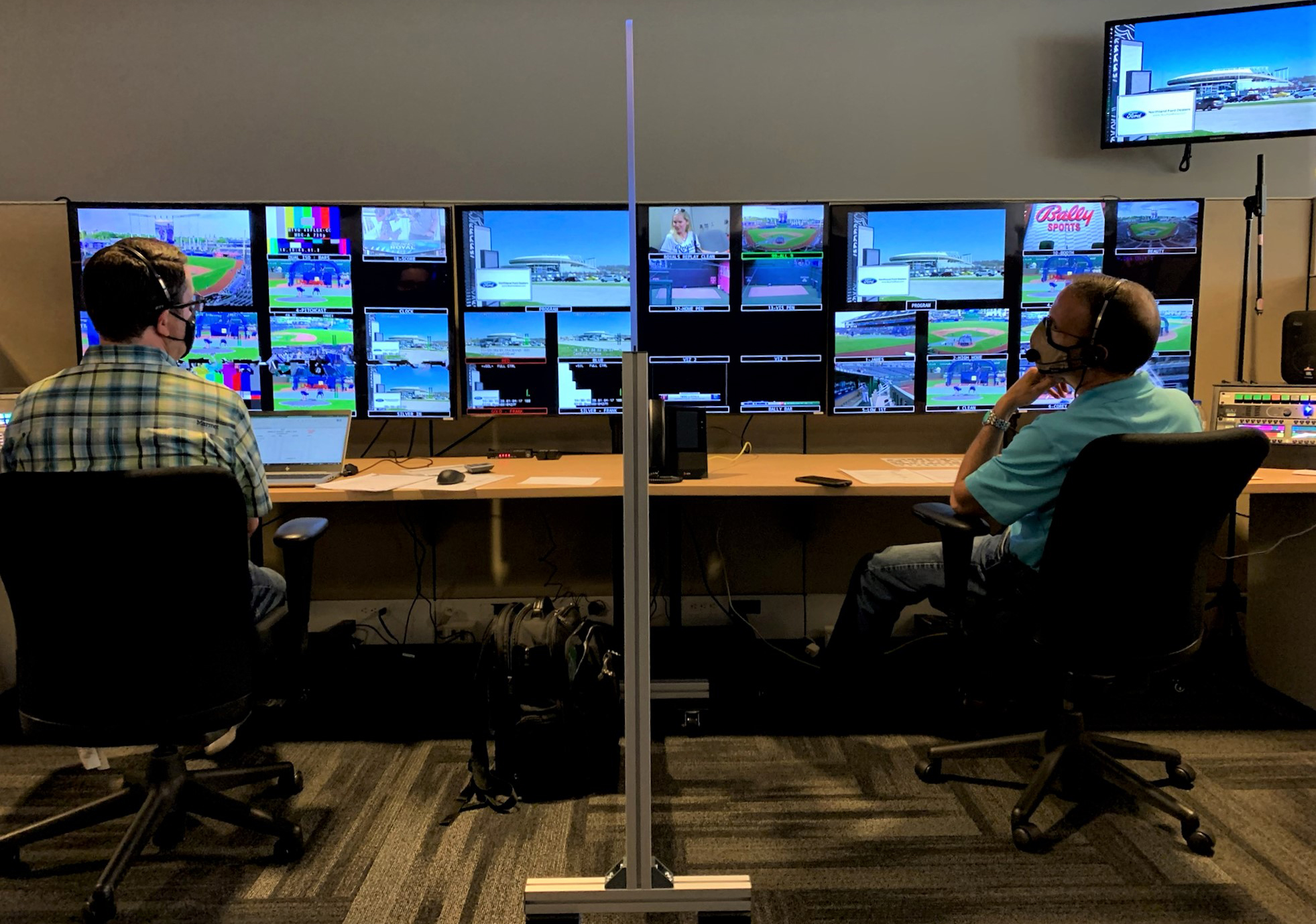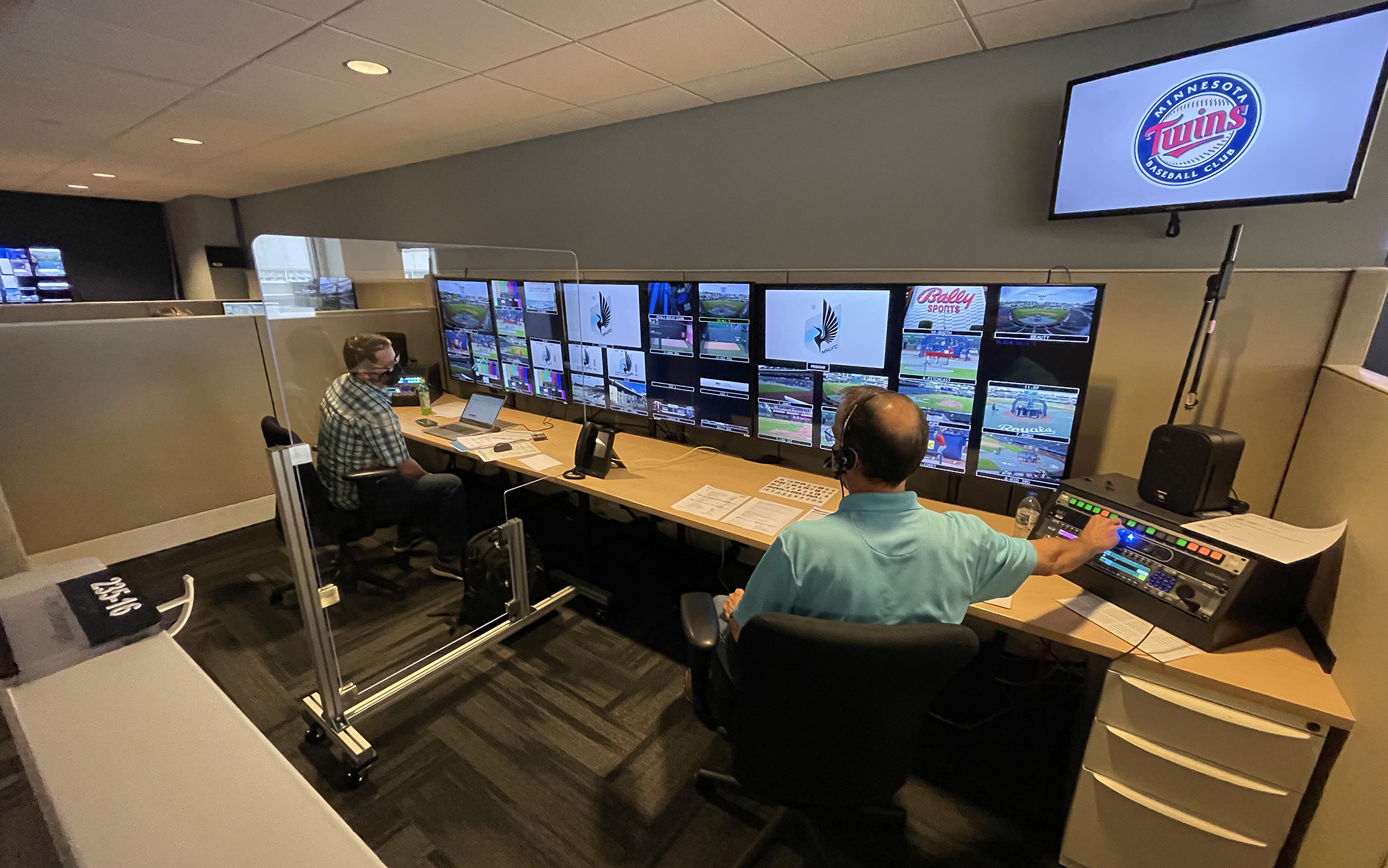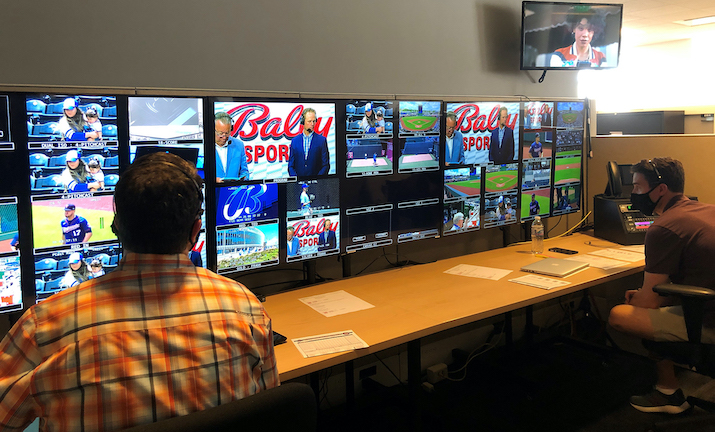Bally Sports Regional Networks Rolls Out Cloud Control Rooms To Boost Storytelling for Local Viewers
Developed with Mobile TV Group, Cloud Control will be extended to all Bally Sports RSNs this fall
Story Highlights
When sports resumed after the pandemic shutdown, regional sports networks were forced to transition to a “world-feed” production model that severely limited the away-team RSN’s ability to customize its broadcast for local fans. In an effort to remain efficient while also restoring RSNs’ storytelling capabilities, Bally Sports Regional Networks is launching Cloud Control rooms at the home offices of its 19 RSNs (as well as at Sinclair-owned sibling Marquee Sports Network in Chicago).
“With [Cloud Control], you truly have control of your own show again,” explains Mike Connelly, EVP, production, Bally Sports Networks. “Our producers and directors can cut their own show again like they did the with the traditional dual-feed model [prior to the pandemic]. At the same time, we’re saving costs by not having to travel our entire [crew] for away shows because [crew members are] located at the [Cloud Control room] in their office.”
Bally Sports’ first Cloud Control room officially launched at Bally Sports North in Minneapolis for a Twins-Royals series at the beginning of June and was followed by Marquee Sports Network in Chicago this month. In both Minneapolis and Chicago, CC rooms are being used for selected MLB productions in which Mobile TV Group (MTVG) is the truck provider for the away-team venue. Here’s a look at Bally Sports North’s Cloud Control setup in Minneapolis:
CC rooms are in place and being tested at Bally Sports Florida (Ft. Lauderdale), South (Atlanta), and Southwest (Dallas), with plans to begin broadcasting next month. The goal is to have CC rooms finalized and tested at all Bally Sports RSNs by September, so that all 19 will be up and running for the start of NHL and NBA seasons in the fall.
How It Works: Truck Is Onsite, Most of the Crew Is at Home
With Cloud Control, the Bally Sports producer, director, and EVS replay, Vizrt graphics, and score-box operators remain at the away-team’s RSN’s home office and use control panels to remotely control the technical facilities in the mobile unit, which is at the away venue. Multiview feeds (not individual camera feeds) from the truck are brought back to the CC room to allow the director to cut the show just as they would if they were in the onsite mobile unit.

With Cloud Control, the director and producer are able to call the broadcast for away games from a control room at the home office like this one in Minneapolis.
The mobile unit — typically a dual-feed unit that serves both the home and the away shows — provides the home show with a full-blown facility and the visiting network with its own switcher/TD and audio console/A1. The visiting network has access to three dedicated cameras plus all the home show’s cameras (including four super-slo-mos). Two EVS replay servers are dedicated to the away team and networked to all the EVS gear in the home show, including the super-slo-mo units.
“You get the same number of [unilateral] cameras that they had in a traditional dual-feed model before [the pandemic] and access to all the home-show cameras with dual tallies,” says Connelly. “Your director can still cut the game like they normally would; they just aren’t actually in the truck.”
He adds that Cloud Control offers considerable cost reductions for the away-team RSN, which isn’t dependent on a world feed produced by the home-team RSN. Under the Cloud Control model, the home production staff does not need to travel, and construction of the CC rooms is at a fraction of the cost of a typical control room.
“You’re saving costs on travel, and you’re not over-extending yourself on capital costs,” Connelly notes, “[The production team] is still with the team at least 50% of the time, so you’re not losing that intimacy you worked so hard to develop. Everything is based on that intimate relationship and making sure that we serve the needs of the team. We can still do that very effectively.”
Connectivity between the CC room and the mobile unit requires only 300 Mb (depending on the venue and the situation), and MTVG provides the coordination to ensure proper communication between the remote-control panels at the RSN’s office and the MTVG mobile unit at the venue.
“This is truly the next stage of the dual-feed model and allows us to serve the needs of our team partners by creating broadcasts that cater to the hometown fans,” says Connelly. “Our entire business is built on the relationships and intimacy we have with our teams, and this keeps our [production crews] close with our teams in their home markets instead of at a centralized control room. [Viewers] are going to see a high-quality show geared towards their team rather than the more generic [world feed] that we’ve had to do with [during the pandemic]. That’s really exciting.”
Looking Back: Years-Long Effort Comes to Fruition
According to Connelly, the concept has been in development for several years, dating back to his group’s previous life as Fox Sports Regional Networks prior to Sinclair’s acquiring the RSNs from Disney (via 21st Century Fox) in 2019. While still under the Fox Sports umbrella, Connelly and his team were exploring ways to reduce travel without sacrificing production quality or staff. His team worked with MTVG to begin developing the system that would eventually become Cloud Control.

Cloud Control rooms are primarily deployed in what was previously office or conference space at Bally Sports RSNs.
When the pandemic forced RSNs to adopt the world-feed model upon the return of live sports production, Connelly saw an opportunity.
“I called [MTVG CEO Phillip Garvin and COO Nick Garvin] and told them that this was an opportunity for what we had been working on this whole time,” he says. “In any crisis, there is a time for opportunity. I told them to get it set up to start testing right away.”
After more than two years of development, Bally Sports and MTVG teamed up with Altitude and AT&T Sports Networks on the first successful test of Cloud Control, in Denver.
“After that test went really well last year, we created a financial plan to make sure this all made sense,” says Connelly. “We immediately saw that, over an extended period of time, we would be saving tens of millions of dollars on production. And we would still be improving on [quality] compared with the world feed.”
Sinclair greenlighted Cloud Control rooms in the capital budget for every region, with up to five systems in some regions. Connelly and Bally Sports VP, Operations, Steve Grigely selected three regions (North, South, and Florida) to install and test CC systems, planning to have at least one system up and running in every region by September.
In addition, the broadcaster is building a Sinclair Video Network (SVN) to replace Fox Sports’ existing VAN (Venue Access Network), which connected all the RSN studios and trucks to venues across the country. The SVN will serve as the backbone for Bally’s Cloud Control operations. Earlier this year, Sinclair also launched a new Media Operations Center at Encompass Digital Media’s headquarters in Atlanta to handle master control for the 19 Bally Sports RSNs, Marquee Sports Network, and YES Network.
Looking Ahead: Rolling Launch Is Slated To Be Fully Live in the Fall
As of now, Bally Sports North and Marquee Sports Network are using CC rooms for selected MLB productions in which MTVG is also the truck provider of the away-team venue. Bally Sports and MTVG are currently working with other truck companies to provide more interoperability to allow CC rooms to be used for all away-game productions.

Under the Cloud Control model, Bally Sports’ lead EVS operator can be located at the home office rather than in the truck for away-game productions.
“The response [from the production teams] so far has been very positive,” says Connelly. “It has actually been better than I thought it would be. I think a lot of people [have been surprised] just how well it works. Of course, they have concerns about maintaining their relationship with the team and not traveling with them, but, for the most part, I think our people are excited that they can keep doing the same show but don’t have to travel anymore.”
All Cloud Control equipment is in place and ready to test at Bally Sports Florida, South, and Southwest; plans call for broadcasts to start in August. Grigely, who is spearheading the project along with Connelly, is working with MTVG to roll out the remaining CC rooms by September, with the goal of fully operational Cloud Control at all Bally Sports RSNs this fall.
“It was a great concept that Mobile TV Group’s engineers came up with, and Steve Grigely, along with Phil and Nick Garvin, really executed it well,” says Connelly. “I can’t praise Bally Sports North enough for embracing this and getting it started. What started off as truck models on a desk has turned into a reality. I’m so proud of everyone for putting this together, and we’re excited about the future.”

